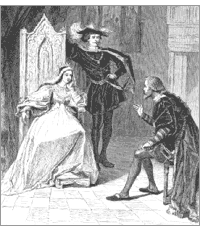
|
| |
1910–1924 | 1925–1926 | 1927–1930 | 1931–1943 | MORE RECENT
RECOLLECTIONS OF HOUDINI To the Editor of The New York Times.
One day he bought a book from me to add to his dramatic collection, which, by the way, grew to be one of the most comprehensive in the country. The next day he called again, only to hand me his check. “What do you mean?” I said jocularly. “Oh, I have consistently followed two rules: to pay my bills and to love my own wife,” he answered with a pleasant twinkle. The next occasion was in Atlantic City. I just had what was alleged to be an original contemporary portrait of Christopher Columbus offered to me. It was the one from which the frontispiece in Prescott’s “Ferdinand and Isabella” was made. This etching hung alongside. I met Houdini at the hotel and told him what I saw. He offered to come with me to the shop. After closely scrutinizing the portrait he whispered to me that it looked good to him. As the dealer, who I must say acted in good faith, was willing to let me have it on approval, I agreed to take it with me to New York. Before leaving the shop Houdini was asked to write something in an album. This is what he wrote: “My mind is the key which sets me free.” To my surprise a similar request was also made to me. I protested unavailingly and then wrote: “Columbus discovered America, and I discovered his portrait.” As we walked away, Houdini remarked that the Columbus legend has long been exploded. I laughed and said that I was not writing history. Now this is what happened after I had the picture in my possession. I had it examined by two experts and both promptly condemned it. Meeting Houdini shortly afterward, I said to him that the next time I went to Atlantic City I shall want to write a postscript in that album, reading: “In the light of higher criticism both discoveries are found to be doubtful.” At this it was Houdini’s turn to laugh. And he did. Poor Houdini. He was a delightful character. He will be missed even more by those who knew him off the stage. Illusionist by profession, he was a simple and matter-of-fact man in private life. GABRIEL WELLS This article is reproduced here only for educational purposes. Please do not copy the text or accompanying images for commercial use.
|
 Two incidents come to mind as I review my acquaintance with Houdini.
Two incidents come to mind as I review my acquaintance with Houdini.